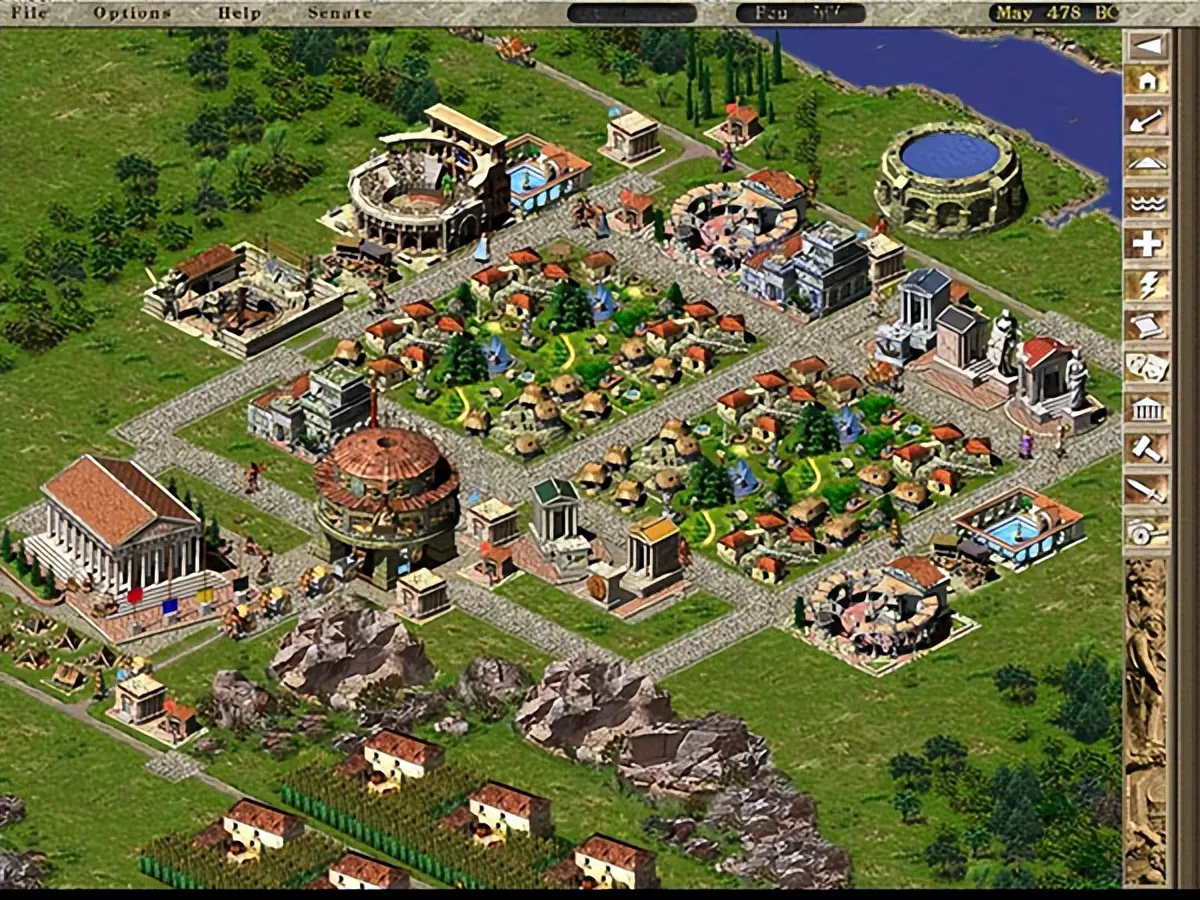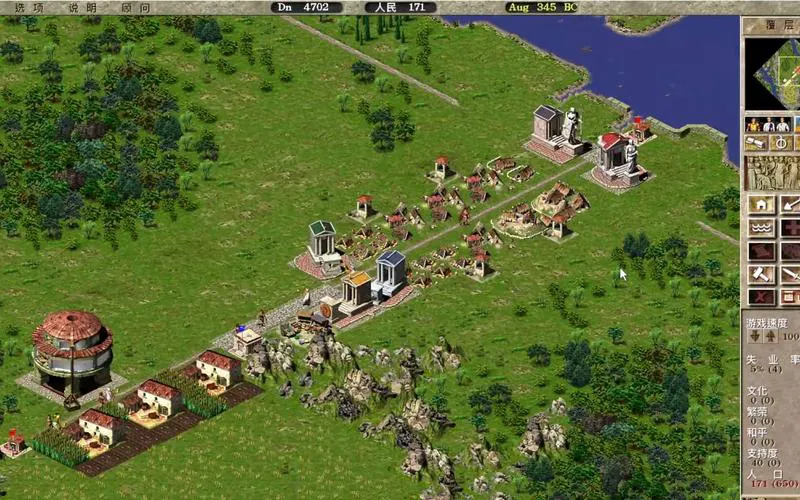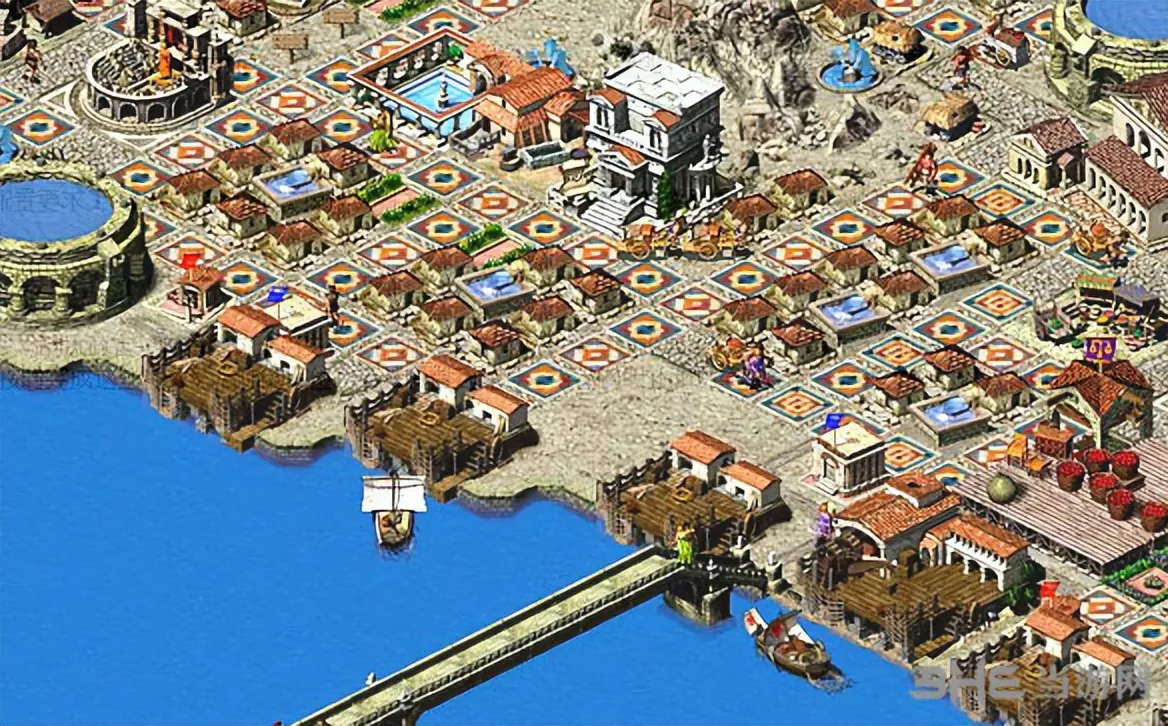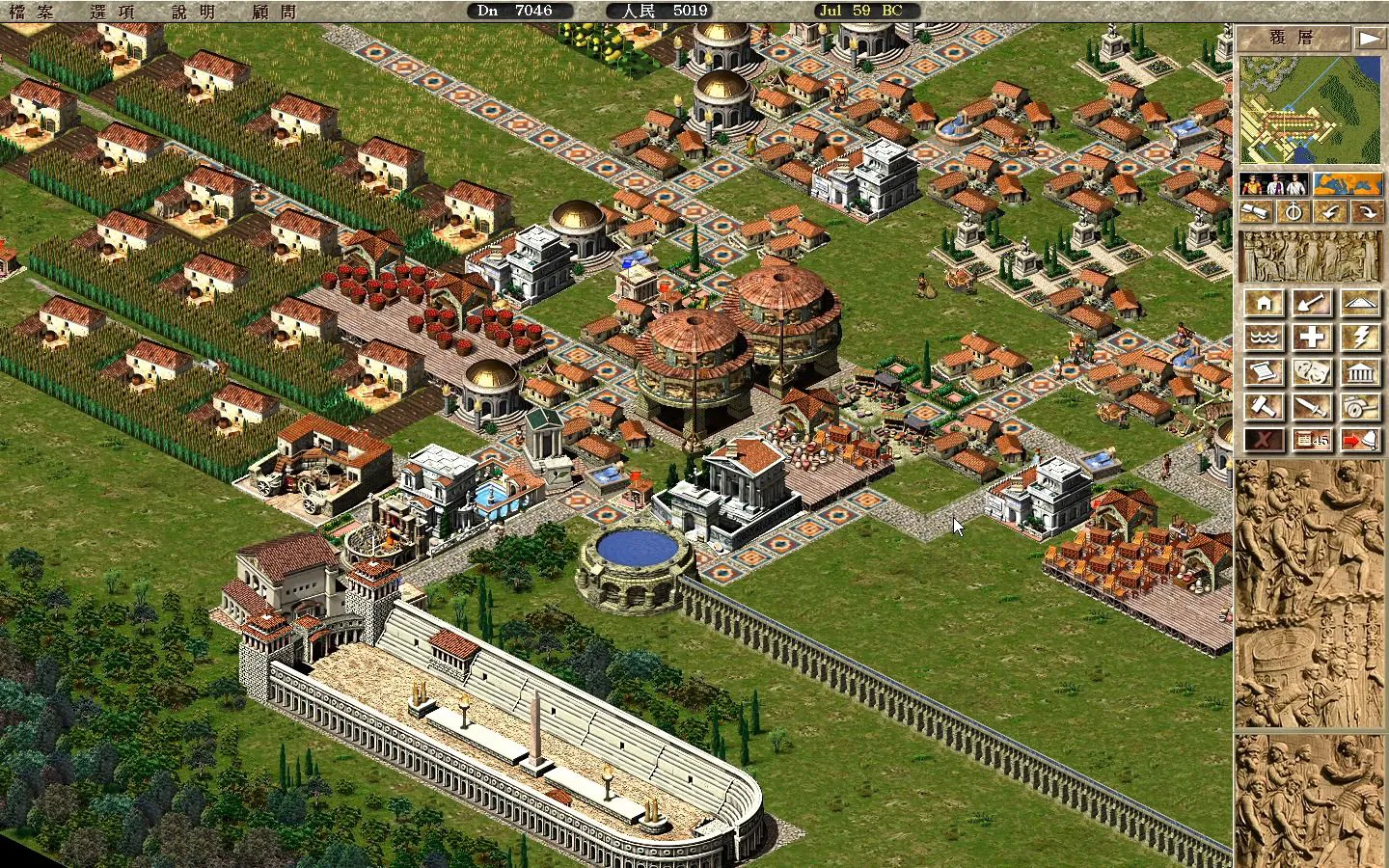Caesar III: When City-Building Met Roman Mayhem
In an era dominated by sprawling, high-fidelity AAA titles, Caesar III stands out as a testament to the enduring appeal of intricate gameplay and challenging simulation. Imagine a bowl of meticulously crafted, yet unadorned, ramen – that’s Caesar III. Its simple pixelated graphics belie a deeply complex system that has driven generations of players to the brink of madness, yet kept them hooked through countless sleepless nights, all in the pursuit of constructing the perfect Roman city, one fountain at a time.

Sierra’s Ambitious Blend: A Dash of SimCity, A Pinch of Age of Empires
Back in 1998, Sierra Entertainment, riding high on the success of titles like Half-Life and King’s Quest, took a bold step into the strategy genre with Caesar III. This wasn’t just another quick-fix, casual game. The developers aimed higher, striving to fuse resource management, military conflict, and the intricacies of ancient Roman politics into a single, notoriously challenging experience.
As a governor appointed by Rome, players face a seemingly straightforward task: establish and nurture a thriving Roman city from the ground up. This involves cultivating wheat fields, constructing aqueducts, appeasing the gods, and, of course, managing the ever-present demands of Caesar himself. However, beneath the surface of serene city-building lies a web of potential disasters. Gallic tribes might raid your granaries, the god Mars could unleash plagues upon your citizens, and even something as simple as a poorly placed bathhouse could trigger widespread unrest. And all of this is just the prelude to becoming a true “infrastructure emperor.”

Rome Wasn’t Built in a Day, But Your City Can Crumble Overnight
If the initial stages of the game serve as a “tutorial zone,” then the “Lutetia” campaign is where players encounter their first true test. The map is fragmented by mountains and rivers, and Caesar demands the sustenance of 8,000 citizens, while the available farmland barely supports two rows of olive trees. To make matters worse, the native Gauls will launch regular raids, and if they detect any expansion into their territory, they’ll promptly send chariots to dismantle your city. As one player jokingly remarked, “I actually borrowed a book on ancient Roman hydraulic engineering from the library just to get through this level.”
However, the real frustration often stems from a false sense of security. Citizens might turn to crime if unemployment exceeds 5%, inadequate temple coverage can anger the gods, and even a market vendor taking too long to fetch goods can lead to city-wide starvation. Legend has it that some hardcore players employed “path blocking” techniques (using walls and gates to control pedestrian movement) to boost city efficiency by a staggering 300%. This level of intricate micromanagement transformed Caesar III from a mere game into a complex “social experiment.”

When Game Mechanics Outsmart Calculus, Players Get Addicted
At its core, this “social experiment” operates on a system of almost sadistic rules. Pottery workshops must be adjacent to clay pits, warehouses too far from docks will cease operations, and affluent residential areas must be kept away from factories (due to pollution). The military system is equally unforgiving. While the enemy AI might be simple, they have a knack for attacking on tax collection day, and your soldiers are prone to desertion due to “moral collapse.” One player aptly summarized: “This isn’t a strategy game; it’s a Roman Civil Servant Simulator.”
Yet, human nature dictates that we often love what challenges us. Players devised ingenious strategies, such as using fountains to mask unemployment, demolishing wells to lure enemy troops for easy victories, and even directly editing game files to achieve victory. But what truly elevated the game was its uncanny sense of immersion. As you meticulously adjusted road networks late into the night, the tiny figures on the screen would complain about food shortages, and the dawn would break outside your window, creating the illusion that you and your Roman citizens were sharing the same space and time.

A Love-Hate Relationship for the Ages
This “human-machine torment” reached its peak with Caesar’s own brand of “rogue logic.” He starts you off with a meager 5,000 gold coins, and if you overspend, he’ll generously offer a high-interest loan, which he’ll collect by sending Roman legions to tear down your city if you fail to repay. What’s even more infuriating is that if you use cheat codes to summon an army and defeat him, Caesar will suddenly change his tune, exclaiming, “Well done! I forgive you!” This “tyrant comedian” persona had countless players laughing and cursing simultaneously, declaring, “So, he decides who wins and loses, but I’m going to start another game anyway!”
Looking back twenty-five years later, Caesar III’s pixelated graphics may seem dated, but its hardcore strategic depth and the dark humor of its “Roman office worker simulator” have earned it legendary status on Steam. As one veteran player commented, “Modern games teach me how to ‘win,’ but Caesar III taught me how to ‘lose gracefully’ – after all, even Caesar himself can be swayed by your fountains.”

In an age where games can be completed in minutes and endings are revealed in mere moments, Caesar III stands as a stubborn Roman brick. It doesn’t pander to you, it doesn’t compromise, and it might even force you to create Excel spreadsheets for a virtual fountain. But when you survive those frustrating nights and finally see the little people on your screen moving into “luxury palaces,” the sense of accomplishment is perhaps even more addictive than becoming Caesar himself.